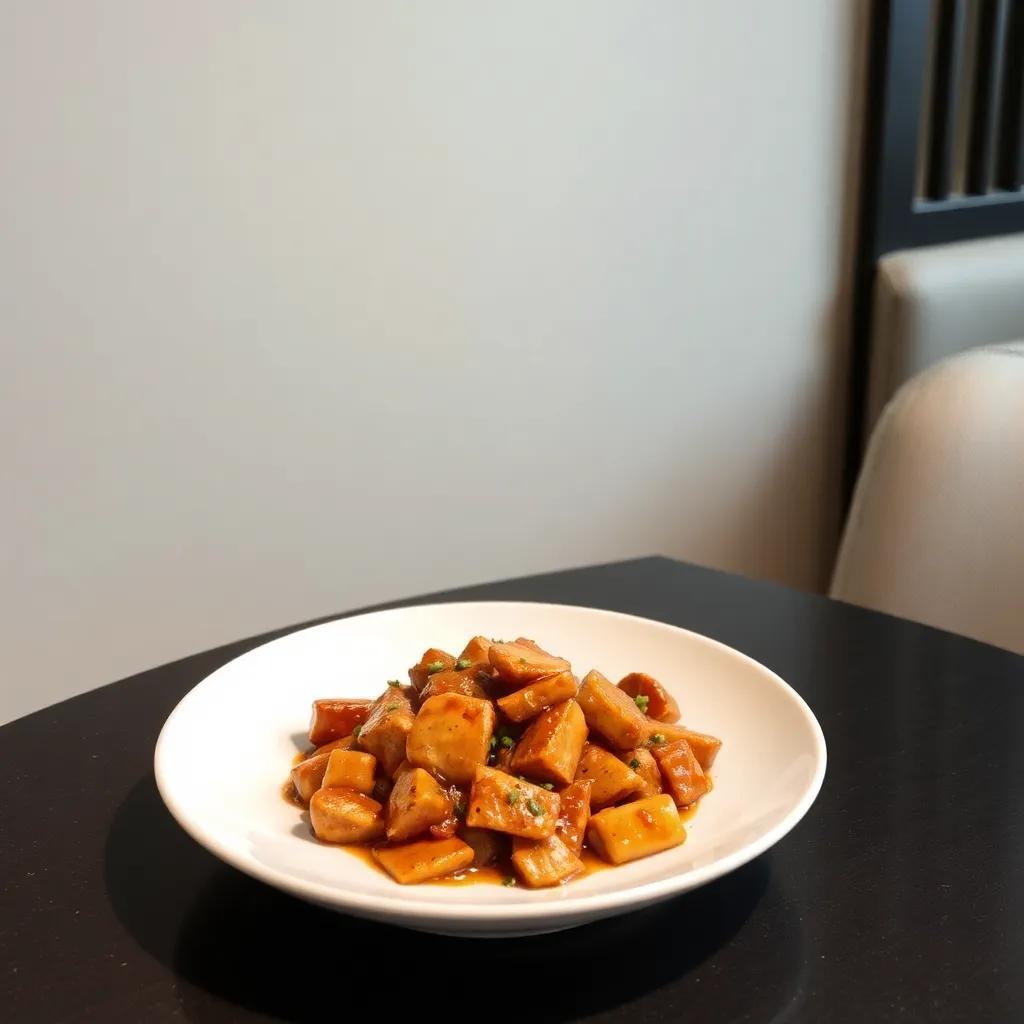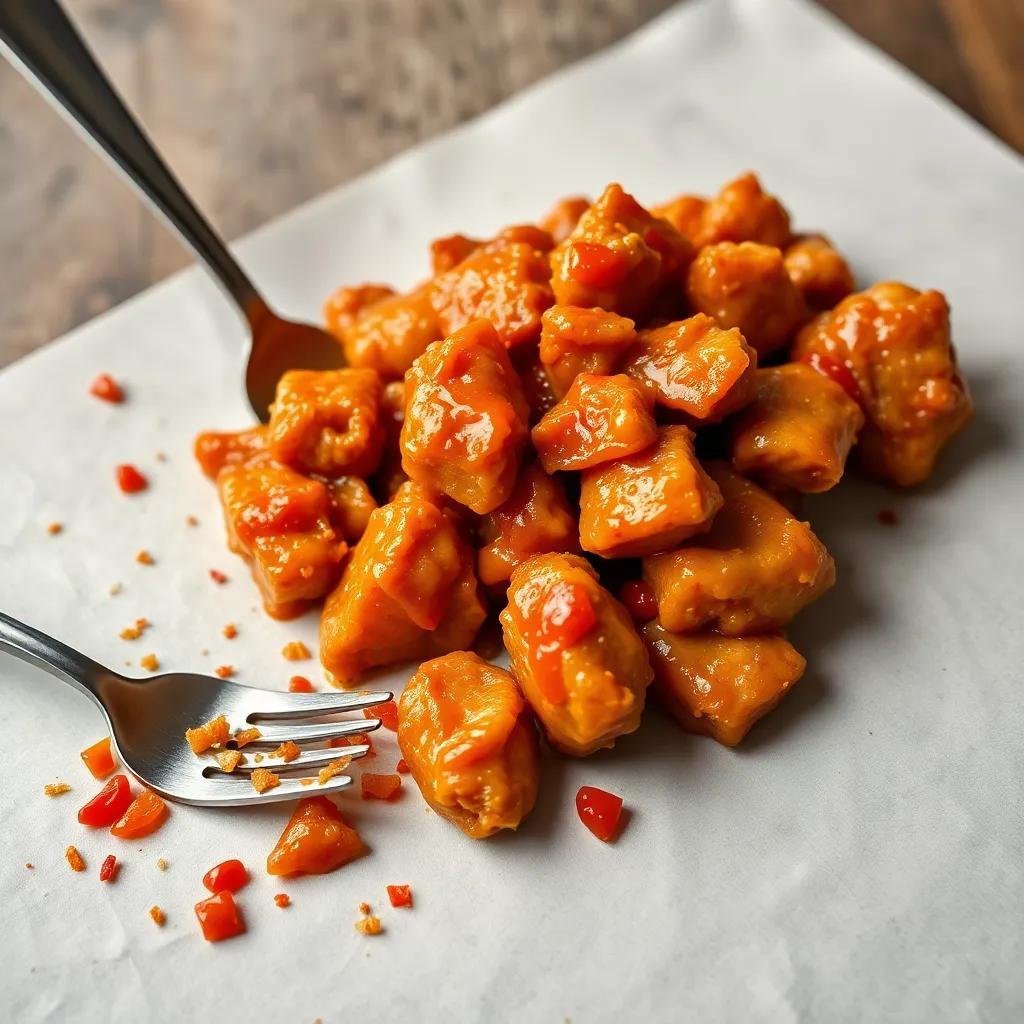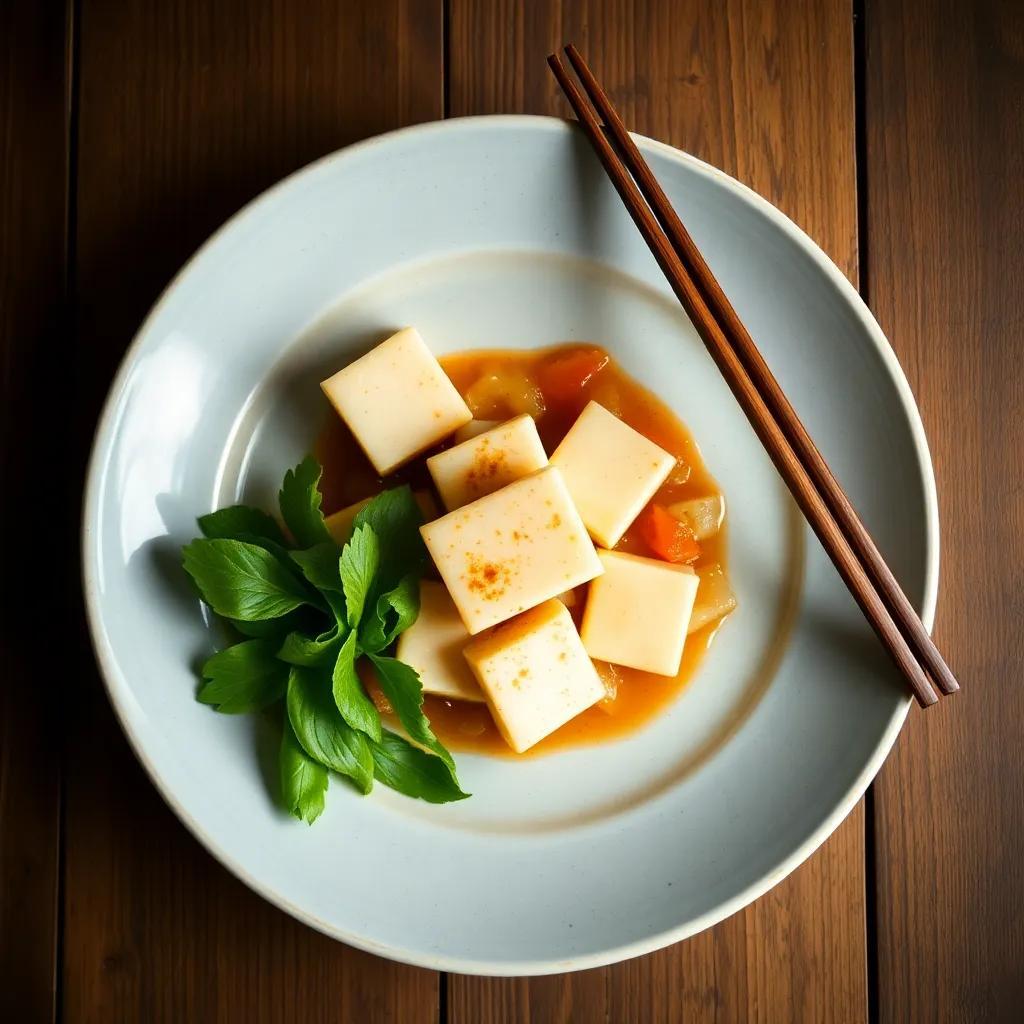Master the Crispy Secret: Easy General Tso’s Chicken Recipe

Master the Crispy Secret: Easy General Tso’s Chicken Recipe
🌍 Cuisine: Chinese-American
⚙️ Difficulty: Easy
Ingredients
Nutrition Facts
550
Instructions
- In a large bowl, combine the flour and cornstarch.
- Dip the chicken pieces into the beaten eggs, then coat evenly in the flour-cornstarch mixture. Set aside.
- Heat vegetable oil in a deep pan or wok over medium-high heat until it reaches 350°F (175°C) or is hot enough for frying.
- Carefully fry the chicken pieces in batches until golden brown and crispy, about 4-5 minutes per batch. Remove and drain on paper towels.
- In a separate bowl, whisk together soy sauce, hoisin sauce, rice vinegar, sugar, and red pepper flakes (if using).
- In a wok or large skillet, heat 1 tablespoon of oil over medium heat. Add garlic and ginger and sauté until fragrant, about 30 seconds.
- Pour in the sauce mixture and bring to a simmer.
- Add the cornstarch slurry to the sauce and stir until it thickens, about 1-2 minutes.
- Toss the fried chicken pieces into the sauce, coating them thoroughly.
- Cook for an additional 1-2 minutes so the chicken absorbs the sauce and becomes extra crispy.
- Remove from heat and garnish with sliced green onions and sesame seeds if desired.
- Serve immediately over steamed white rice or your choice of side.
Serving Suggestions
- Serve General Tso’s Chicken with steamed jasmine rice or fried rice.
- Pair with stir-fried or steamed broccoli for a balanced meal.
- Add a side of sautéed snow peas or snap peas for crunch.
- Sprinkle chopped roasted peanuts for added texture and flavor.
- Serve alongside egg drop soup or hot and sour soup as a starter.
- Use as a filling in lettuce wraps for a lighter option.
- Top with thinly sliced fresh chili for extra heat if desired.
Table of Contents

Intro
General Tso’s Chicken holds a special place in the hearts of many as a beloved Chinese-American classic, known for its irresistible balance of sweet, tangy, and slightly spicy flavors. What makes this recipe truly exciting is how it captures that restaurant-quality crispiness at home without requiring advanced skills or mysterious ingredients. Whether you’re cooking for a cozy family dinner, a casual weekend gathering, or simply craving a flavorful comfort meal, this version brings approachable techniques that transform everyday chicken into a delectably crunchy, sauce-coated sensation.
Beyond its delightful taste and texture, this dish invites you to savor the process of frying and glazing—offering both a rewarding kitchen adventure and a crowd-pleaser on the table. Pair it with your favorite sides, and you’ve got an easy yet impressive meal ready in under an hour. This recipe serves as a gateway to mastering the art of crispy frying and sauce-making, empowering home cooks to elevate their takeout game with confidence.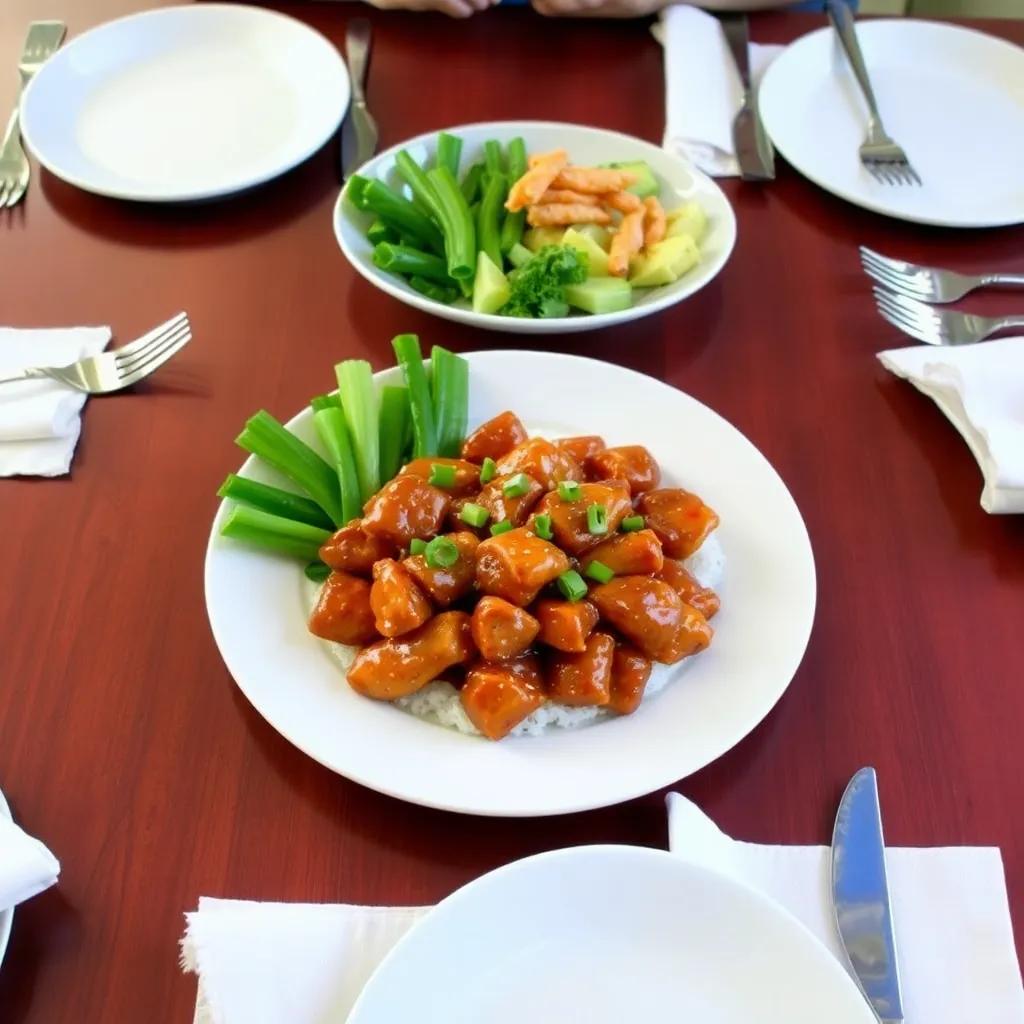
Ingredient Notes
When it comes to mastering the crispy magic and bold flavors of General Tso’s Chicken, a few key ingredients play starring roles beyond just their names on the list. Understanding these elements not only enhances your cooking experience but also allows you to tweak the dish to your liking or pantry availability.
Cornstarch
Cornstarch is the unsung hero behind that coveted crispiness. Unlike flour alone, cornstarch creates a light, delicate crust that fries up golden and stays crisp longer—crucial for coating the chicken before frying and for thickening the sauce to a glossy finish. When shopping, choose a pure cornstarch (not mixed with flour) to ensure optimal texture. If you’re in a pinch, arrowroot powder can be a good gluten-free alternative with a similar thickening effect, though it may produce a slightly less crunchy finish.
Hoisin Sauce
This thick, fragrant sauce is essential for delivering the sweet and savory depth characteristic of General Tso’s. Its rich umami, melded with hints of garlic, vinegar, and spices, adds complexity that plain soy sauce can’t achieve alone. When buying, look for hoisin sauce with a balanced sweetness and no artificial additives—often available in Asian markets or well-stocked grocers. If hoisin is unavailable, a quick homemade substitute can be made by mixing soy sauce, peanut butter, a touch of honey, and a splash of vinegar, but the authentic bottled version truly brings that layered flavor.
Rice Vinegar
Rice vinegar provides the bright acidity that cuts through the richness of fried chicken and sweet sauces, keeping each bite lively and balanced. Its mild, slightly sweet tang is less harsh than white vinegar, making it a subtle but vital flavor anchor. For a seamless swap, apple cider vinegar can work in a pinch, but reduce the quantity slightly to avoid overpowering the sauce’s delicate harmony.
By paying attention to these key ingredients—cornstarch for crisp texture, hoisin sauce for deep umami, and rice vinegar for balanced acidity—you’re arming yourself with the knowledge to both nail the classic General Tso’s flavor and confidently adapt the recipe to your pantry or preferences. They’re small but mighty details that transform this dish from good to unforgettable.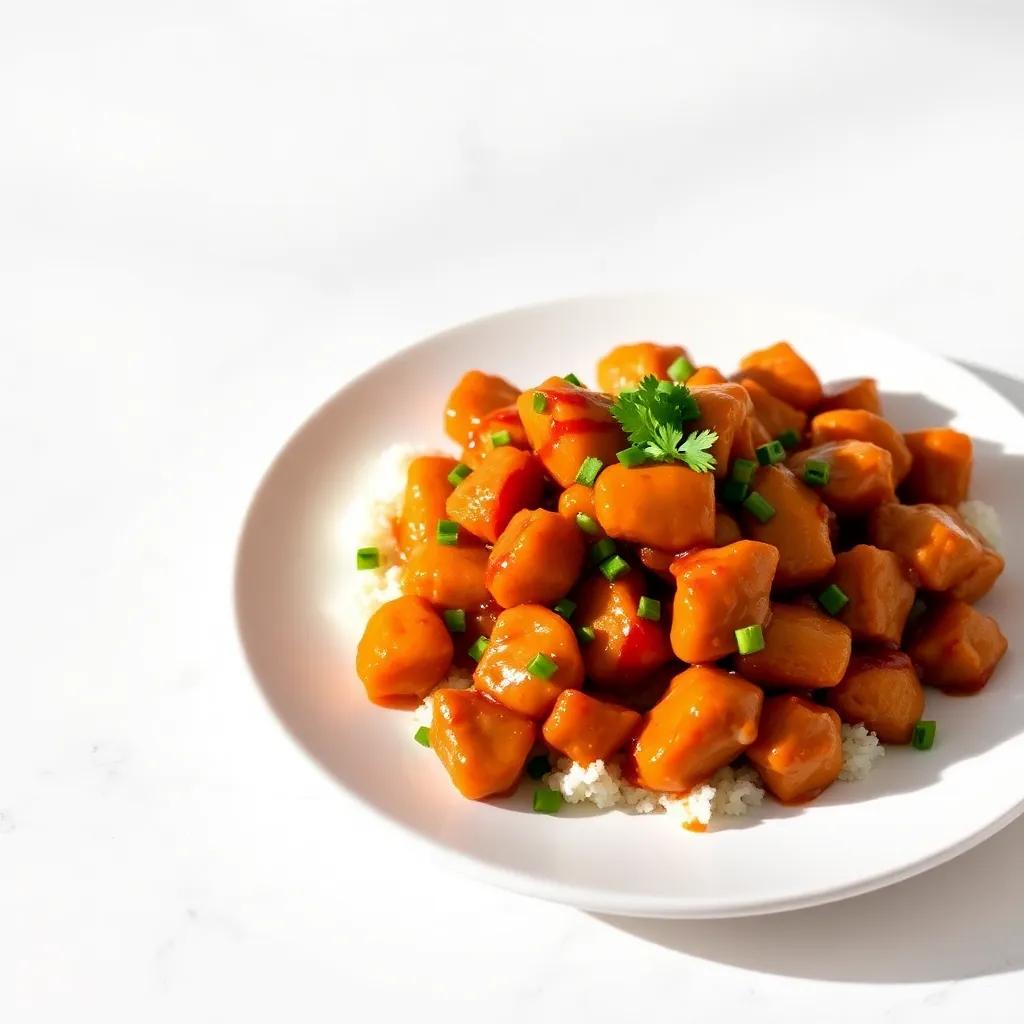
Tips & Variations
Achieving that perfect crispy coating and well-balanced sauce is easier with a few professional touches and creative twists to suit your palate or dietary needs. Here are some tips and variations to help you make this General Tso’s Chicken recipe truly your own:
- Double-Fry for Next-Level Crispiness: After the initial frying, let the chicken pieces rest for a few minutes, then fry them a second time for 1-2 minutes. This technique locks in extra crunch and keeps the chicken wonderfully crispy even after tossing it in sauce.
- Adjusting Sweetness and Heat: The classic balance leans sweet and mildly spicy, but don’t hesitate to tailor it. Add a splash of fresh orange juice or zest for a citrusy brightness. For more heat, fresh sliced chili peppers or sambal oelek add complexity beyond red pepper flakes.
- Sauce Texture Customization: If you prefer a lighter glaze, reduce the sugar slightly or omit the cornstarch slurry, simmering the sauce just enough to meld flavors. For a thicker, almost sticky coating, increase the slurry to intensify the glossy finish.
- Alternative Proteins: Swap chicken thighs with skinless chicken breasts for a leaner option, but be careful not to overcook since they dry out faster. For a vegetarian or vegan twist, tofu works wonderfully—use firm tofu, press out excess moisture, and bake or pan-fry until golden. Then toss with the same sauce for that signature flavor.
- Gluten-Free Adaptations: Replace all-purpose flour with a mix of rice flour and cornstarch to maintain the crisp texture. Use tamari or gluten-free soy sauce instead of regular soy sauce to keep it safe for gluten-sensitive diets.
- Simplifying the Frying Step: If deep-frying isn’t your preferred method, pan-frying in a generous amount of oil works in a non-stick skillet, turning frequently for even browning. Baking chicken coated in the flour-cornstarch mix at 425°F (220°C) on a wire rack can also approximate crispiness with less oil—just spray or brush lightly with oil before baking.
- Adding Aromatics and Extras: Toss in sautéed bell peppers, snap peas, or water chestnuts at the last minute for a refreshing crunch and vibrant color. Garnishing with toasted sesame seeds, chopped roasted peanuts, or finely sliced green onions adds texture and nuttiness that elevate the dish.
By playing with these tweaks and substitutions, you can create a personalized General Tso’s experience—whether it’s a healthier weeknight dinner, a crowd-pleasing party dish, or a vegan rendition that doesn’t skimp on flavor or texture. The key lies in balancing that irresistible crispiness with a sauce that sings on your tongue, letting you master the crispy secret on your terms.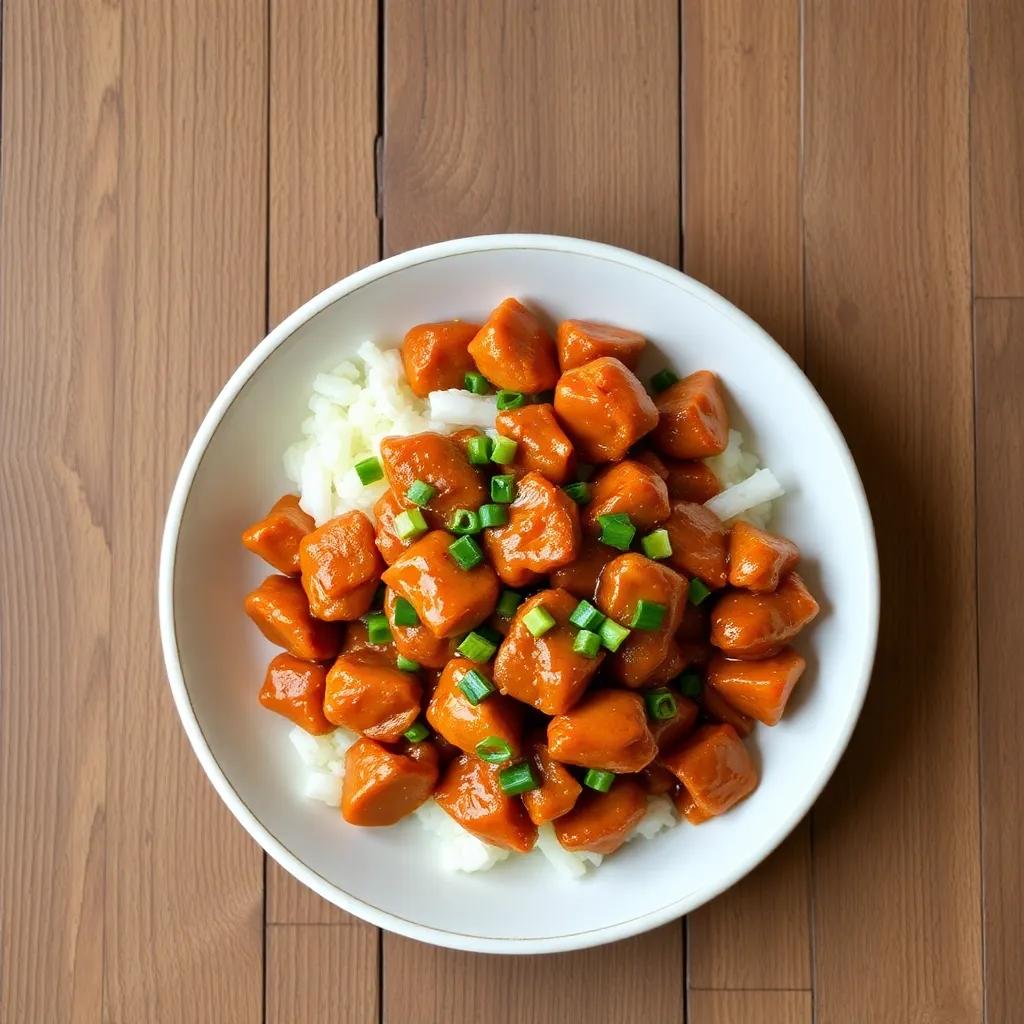
Leftovers & Storage
Leftover General Tso’s Chicken holds up surprisingly well, making it an excellent candidate for meal prep or quick reheating on busy days. To keep that signature crispiness and vibrant sauce flavor intact, proper storage is key.
First, allow the chicken to cool to room temperature before packing it away. Transfer the leftovers into an airtight container—preferably glass or BPA-free plastic—to prevent moisture from seeping in and making the coating soggy. Separate the chicken from any rice or side dishes to maintain textures better.
In the refrigerator, General Tso’s Chicken will stay fresh for up to 3-4 days. When reheating, the biggest challenge is reviving that crispy exterior without drying out the meat. The best method is to reheat in a hot oven or a toaster oven at around 350°F (175°C) for 8-10 minutes on a wire rack, which allows air circulation around the pieces. This helps restore crispiness while warming through evenly. Avoid microwaving if you want to preserve texture, as it tends to make the coating soft and chewy. However, if convenience wins, microwave on medium power in short bursts, then finish with a quick oven crisp-up if possible.
For longer storage, General Tso’s Chicken freezes well for up to 2 months. Freeze the chicken and sauce separately if you can—this prevents the coating from becoming overly soggy upon thawing. Pack in freezer-safe containers or heavy-duty zip-top bags, pressing out excess air. Thaw overnight in the refrigerator before reheating using the oven method described above.
If you want to meal prep, consider portioning the chicken into single-serving containers along with freshly cooked rice and steamed vegetables. Keep the chicken and sauce on top or on the side to ensure everything maintains its best texture and flavor. This way, you have a ready-to-go meal that tastes almost as good as freshly made.
By handling leftovers with these simple storage and reheating tips, you’ll preserve the delicious crispy texture and tangy sauce that make General Tso’s Chicken such a satisfying treat—day after day.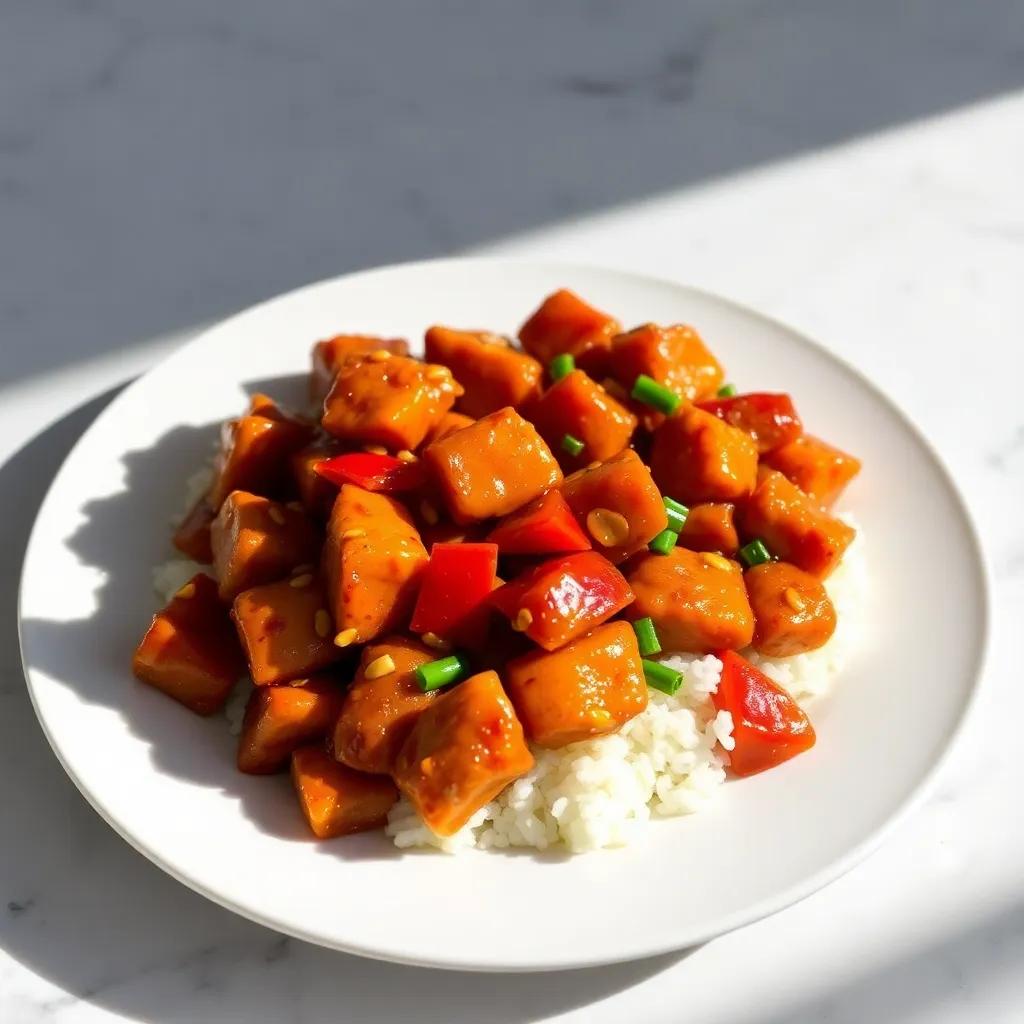
Behind the Recipe
General Tso’s Chicken is a dish with a fascinating history that reflects the dynamic fusion of culinary cultures. While it’s often thought of as a traditional Chinese recipe, its roots actually lie within Chinese-American cuisine, first popularized in the United States during the mid-20th century. The dish is named after Zuo Zongtang (General Tso), a Qing dynasty military leader, though the recipe itself doesn’t trace back to his era or specific regional Chinese cooking. Instead, it emerged as an inventive creation by Chinese immigrant chefs who adapted flavors and textures to American tastes—balancing bold sweetness, tang, and mild spice alongside a gloriously crispy fried chicken.
This recipe captures the spirit of that inventive tradition, blending old-world flavor inspirations with practical techniques designed for home cooks. The crispy coating paired with a thick, flavorful glaze tells a story of culinary ingenuity—where textural contrast is just as important as taste. Many families and food lovers have their own cherished versions, often passing down small tweaks and secrets that personalize the dish, making it a comforting staple for celebrations, casual dinners, and takeout cravings.
On a personal note, mastering the crispy secret behind General Tso’s has unlocked a new level of confidence in frying and sauce-making. It’s a dish that invites experimentation—whether experimenting with spice levels, using alternative proteins, or perfecting that golden crust—turning cooking into a joyful, rewarding ritual. In exploring this recipe, you’re not just recreating a popular plate; you’re taking part in an ongoing story of adaptation and flavor that connects kitchens around the world to a shared love of bold, comforting food.
FAQ
Can I use tofu instead of chicken for a vegetarian version?
What’s the best way to keep the chicken crispy when reheating leftovers?
Can I make the sauce ahead of time and store it?
Is there a gluten-free way to make this recipe?
Can I freeze General Tso’s Chicken leftovers?
What can I serve with General Tso’s Chicken to make it a complete meal?
How can I adjust the heat level to suit my taste?
Try It Yourself
With its perfect balance of crispy texture and bold, tangy flavors, this easy General Tso’s Chicken recipe is your ticket to bringing a beloved takeout favorite right into your own kitchen. Whether you’re cooking for family, friends, or simply treating yourself, mastering this dish is sure to impress and satisfy those cravings in the most delicious way.
Now it’s your turn to give it a try! We’d love to hear how your version turns out—feel free to leave a comment, rate the recipe, or share your unique twists. Happy cooking, and here’s to many crispy, saucy moments ahead!










